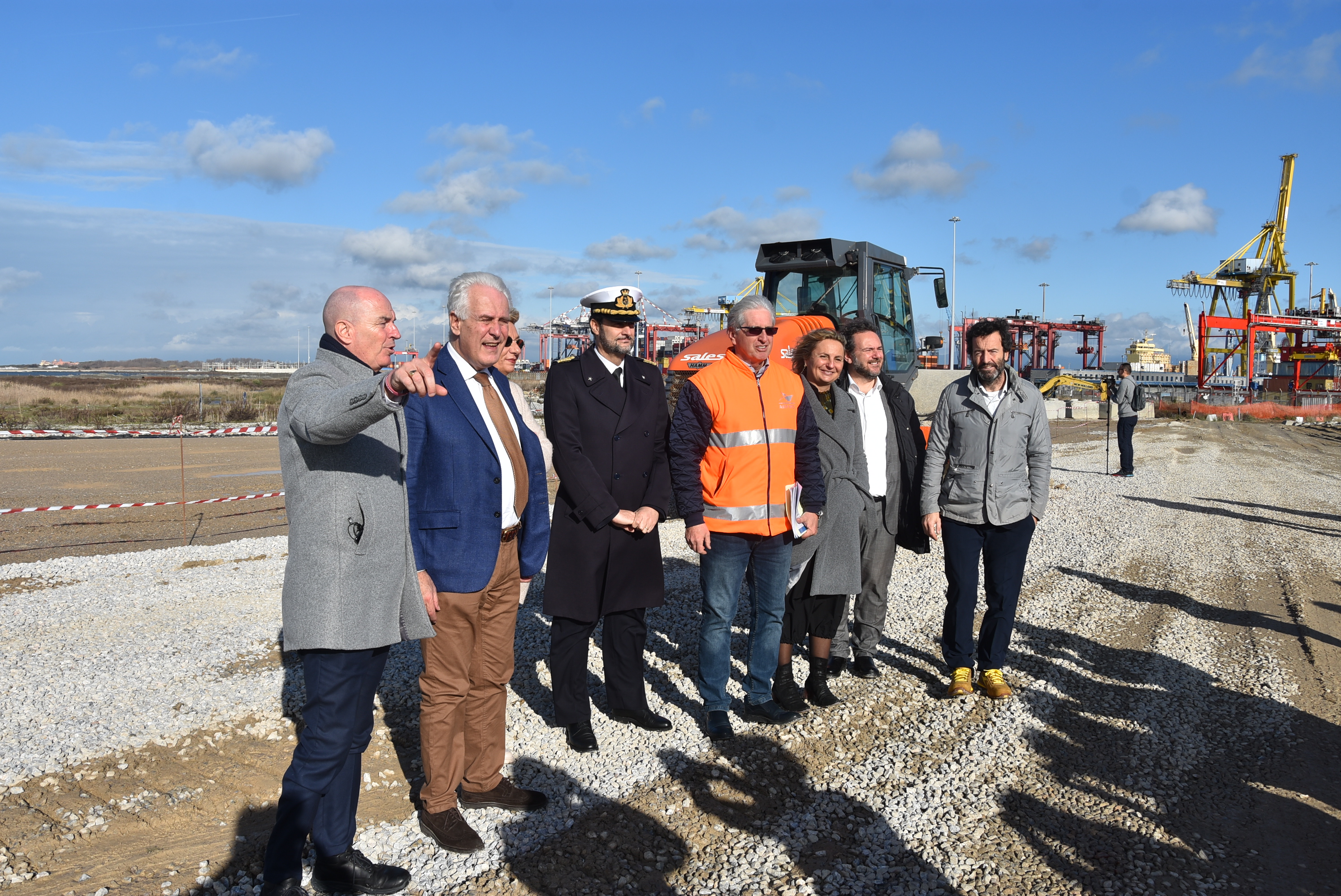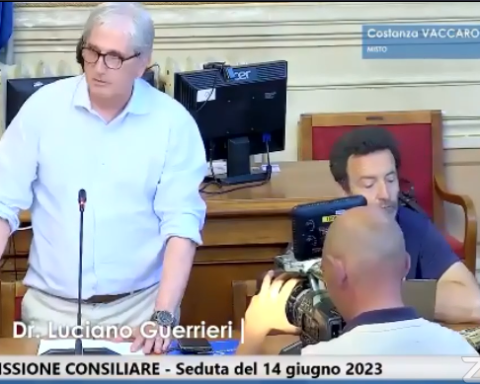A few months after the contract was signed with the Temporary Joint Venture represented by Sidra, as well as Società Italiana Dragaggi, Fincantieri Infrastructure Opere Marittime, Sales and Fincosit, the completion of the Darsena Europa mega infrastructure is an ongoing process but the pieces are gradually all falling into place.
At a press conference organized at the Darsena Europa construction site in the presence of the president of Tuscany Regional Administration, Eugenio Giani, and the mayor of Livorno Luca Salvetti, special commissioner for the project, Luciano Guerrieri, wanted to give an update on the progress in terms of procedures and work being done on the mega infrastructure, with a detailed account of what has been accomplished over the last few months and the issues still pending.
In Mr. Guerrieri’s mind, there is only one goal: to get the bulldozers operating as quickly as possible, meeting all the necessary procedural deadlines and, if possible, cutting a few corners.
The roadmap that Luciano Guerrieri and vice-commissioner, Roberta Macii, have set for themselves does not seem to allow for detours. Despite the recent adjustment to the overall project, and in spite of concerns about materials becoming increasingly expensive and probable rising infrastructure costs, everything suggests that the deadlines will be met.
The commission staff are proceeding as briskly as possible in a threefold direction: 1) The ongoing removal of wartime debris, which is essential in a port that was bombed during World War II; 2) The completion of the testing in the specific designated area to check the consolidation of the dredged material containment basin and the extension of the testing to the rest of the area; 3) The acquisition of the Environmental Impact Assessment by the Ministry of the Environment.
Removal of wartime debris
The removal of wartime debris is the first major milestone that has to be reached in order to get to the final opening of the whole site.
It is a mammoth operation, especially considering that, for a large part of the current stretch of water west of the Darsena Toscana dock, over 16 million cubic meters of sediment will have to be removed for the seabed depth to be increased.
The removal of wartime debris will involve the banks of the dredged material containment basin. There will be two steps. Over the next few weeks, initial surface surveys will be completed. Afterwards, a series of holes will be dug into which probes capable of detecting iron will be inserted. An assessment will have to be made on a case-by-case basis as to whether the signal is such as to suggest explosives or whether it is just debris. When in doubt, specialized firms will dig down to go and check. Any bombs found will be detonated in a safe place.
Consolidation
In the meantime, the companies awarded the maxi-contract are currently in the process of consolidating the first of the two containment facilities, the one on the south side, closest to the Darsena Petroli oil terminal.
In November, testing began in an initial designated area to investigate the effect of the consolidation of the sediments put into the containment facilities, destined to become the new container terminal, on the subsoil.
Basically, a series of boulders and materials, heavy enough to overburden the ground, have been deposited on a rectangular area of land of approximately 20,000 square meters. The aim is to “squeeze out” all the water still present, so that it rises up thanks to the drainage effect.
The boulders used for testing will be useful in two ways because, once testing is completed, they will be utilized to prepare the new breakwaters. A total of 4 million tonnes of rock per breakwater unit, 1.2 million tonnes of natural boulders and over 200,000 m3 (empty to full) of acropods will be needed. 70% of these boulders will be brought by sea.
The subsurface tests and results will allow the contractor to fine-tune the construction work.
The Environmental Impact Assessment (EIA)
The EIA documents have already been prepared and sent to the Ministry department in charge for possible integrations and requests for clarification. The process should be completed in time for Commissioner Guerrieri to finally open the construction site.
Darsena Europa’s new design
During the conference, the Commissioner explained that the overall design of the Darsena Europa infrastructure had been revised.
In fact, with the new Technical Functional Adjustment, the commission staff have, first and foremost, set out to increase the capacity of the current containment facilities so that they will be able to accommodate all marine sediments from dredging operations.
In fact, in addition to the 10.7 million cubic meters originally planned, not only the 5 million cubic meters previously earmarked for beach nourishment above Calambrone had to be added, but also the new volumes that will be needed for future maintenance and/or deepening of the seabed.
This is why the Piattaforma Europa project has been revised. As is well known, it involves the building of a container terminal to the south (Phase One) and the construction of a modern Ro/Ro terminal to the north. In essence, a widening of the operational yard (northern embankment) of the future ro/ro terminal has been proposed due to the alignment of the northern breakwater with the Arno overflow canal embankment.
The total area of the new containment facility will be about 100 hectares and will have a total capacity of about 10 million cubic metres.
Translation by Giles Foster




